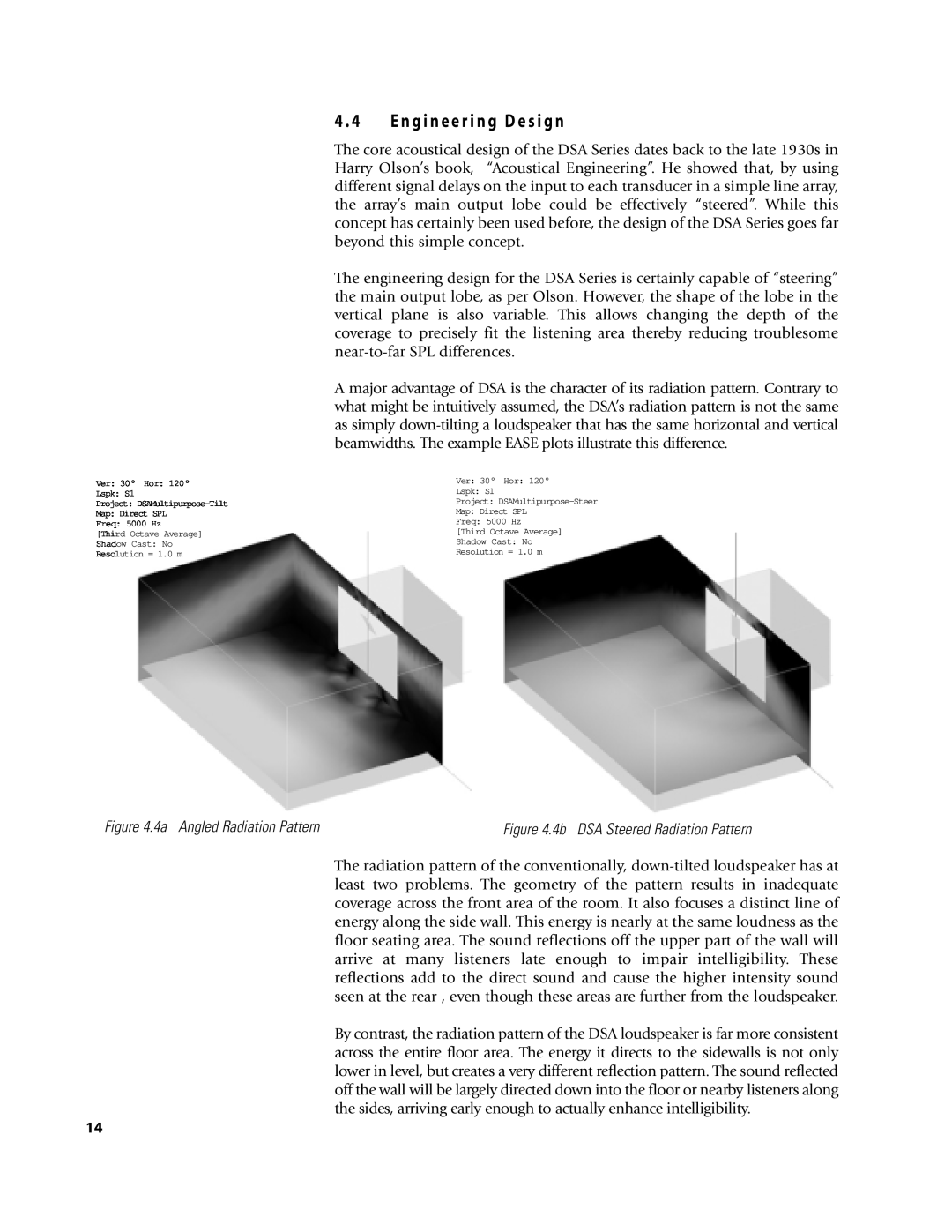
Ver: 30° Hor: 120°
Lspk: S1
Project:
Map: Direct SPL
Freq: 5000 Hz
[Third Octave Average]
Shadow Cast: No
Resolution = 1.0 m
4 . 4 E n g i n e e r i n g D e s i g n
The core acoustical design of the DSA Series dates back to the late 1930s in Harry Olson’s book, “Acoustical Engineering”. He showed that, by using different signal delays on the input to each transducer in a simple line array, the array’s main output lobe could be effectively “steered”. While this concept has certainly been used before, the design of the DSA Series goes far beyond this simple concept.
The engineering design for the DSA Series is certainly capable of “steering” the main output lobe, as per Olson. However, the shape of the lobe in the vertical plane is also variable. This allows changing the depth of the coverage to precisely fit the listening area thereby reducing troublesome
A major advantage of DSA is the character of its radiation pattern. Contrary to what might be intuitively assumed, the DSA’s radiation pattern is not the same as simply
Ver: 30° Hor: 120°
Lspk: S1
Project:
Map: Direct SPL
Freq: 5000 Hz
[Third Octave Average]
Shadow Cast: No
Resolution = 1.0 m
Figure 4.4a Angled Radiation Pattern | Figure 4.4b DSA Steered Radiation Pattern |
The radiation pattern of the conventionally,
By contrast, the radiation pattern of the DSA loudspeaker is far more consistent across the entire floor area. The energy it directs to the sidewalls is not only lower in level, but creates a very different reflection pattern. The sound reflected off the wall will be largely directed down into the floor or nearby listeners along the sides, arriving early enough to actually enhance intelligibility.
14
